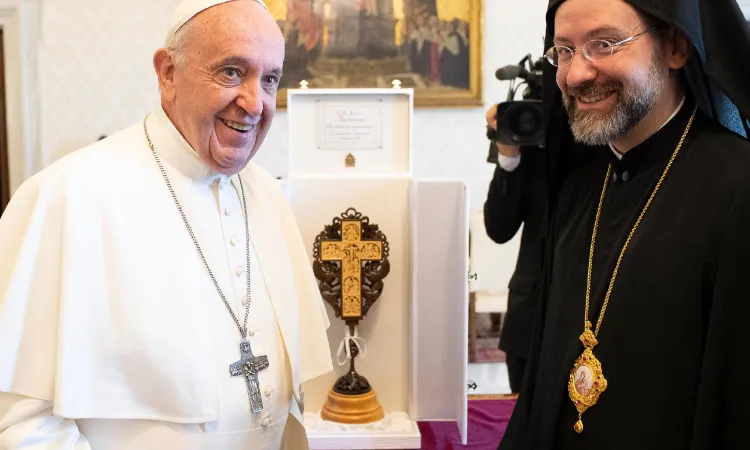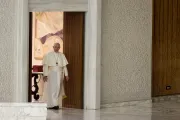The works lead to an archeological excavation. Between 1940 and 1949, Vatican archeologists find a Roman necropolis and a small monument right under the altar of St. Peter, which was evidently dedicated to the apostle and likely indicated the place of his burial.
The monument was within a funeral fence, a small niche that stayed at the center both of the Constantinian Basilica and of the current St. Peter Basilica. St. Peter's Basilica was built in the 4th century by Emperor Constantine and then rebuilt in the 15th century.
There were many findings, but all related to the tomb of Peter, not the relics. What was in the monument and underneath the memorial had been destroyed.
Pius XII, in his Christmas radio message of Dec. 23, 1950, underscored that "the tomb of St. Peter has been found", while there was no certainty about the relics. "Around the tomb, Pope Pius XII said, human bones were found, but it is impossible to prove with certainty that they belonged to the apostle."
More in A Vatican Observer
During the 1960s, Professor Margherita Guiducci announces she found the bones of Peter. Guiducci was an epigraphist, after several studies of the graffiti of Christians in the area around the tomb of Peter.
She said that a worker who took part in the excavations showed her, in the storage, a group of bones that archaeologists found and forgot. The bones would belong to an only man, a male, enveloped in a precious tissue.
Guarducci is a friend to Paul VI, and she tells him her discovery. The Pope seems convinced and, on June 26, 1968, he announces that "new patient and very accurate investigations took place, and we deem the outcome positive: even St. Peter's relics have been identified convincingly, we might say."
However, there is no certainty that the bones are St. Peter's. The analysis seems to confirm sex, age, and historical period fit to the life of the Apostle, the identification of the bones was based on the place where the bones were taken.
The bones were in a hole in a second wall of the niche, built before the construction of Constantinian Basilica with the scope to support the other wall, damaged by a crack.
Guarducci studied the graffiti on the outer side of the wall, where there was this little hole. The archeologists found the hole empty. The worker revealed to Guarducci that he had taken the bones before the archeologists get thereupon an order of Mons. Ludwig Kaas, who was responsible for St. Peter's Fabric during the excavations.
It is not proved, though, that the bones belong to St. Peter. First of all, the place where the bones were allegedly located is strange. Guarducci said that the bones were taken out of the original tomb to save them from persecutions.
(Column continues below)
Subscribe to our daily newsletter
Guarducci said that the prove the bones were the bones of Peter in an inscription she found in the hole. There were a few letters, which she interpreted as "Petros eni," the ancient Greek for "Peter is here." Those words would indicate the real place of burial of the bones of the saint.
Other epigraphists questioned Guarducci's interpretation. For example, Carlo Carletti wrote in L'Osservatore Romano of Apr. 3, 2013 that the inscription is part of the phrase "Petros en irene," Peter in peace, one of the most common acclamations to the saint since the 3rd Century.
It cannot be excluded that the bones belong to St. Peter. It cannot be proved either.
There is also another possibility: that the bones were placed inside a tomb destroyed while in construction. The tomb of Peter was damaged, nobody knows when. It was likely up during the construction of the Constantinian basilica in the 4th century.
In 846, under Pope Serge II, Saracens got to Rome and devastated St. Peter's Basilica. It is possible that the tomb of Peter was plundered in that period. Serge II's successor, Leo IV, decided to build the Leonian Walls to protect the Basilica.
Paul VI seemed convinced of the authenticity of the relics and wanted to put the nine fragments of bones together and he kept them close to his heart.



